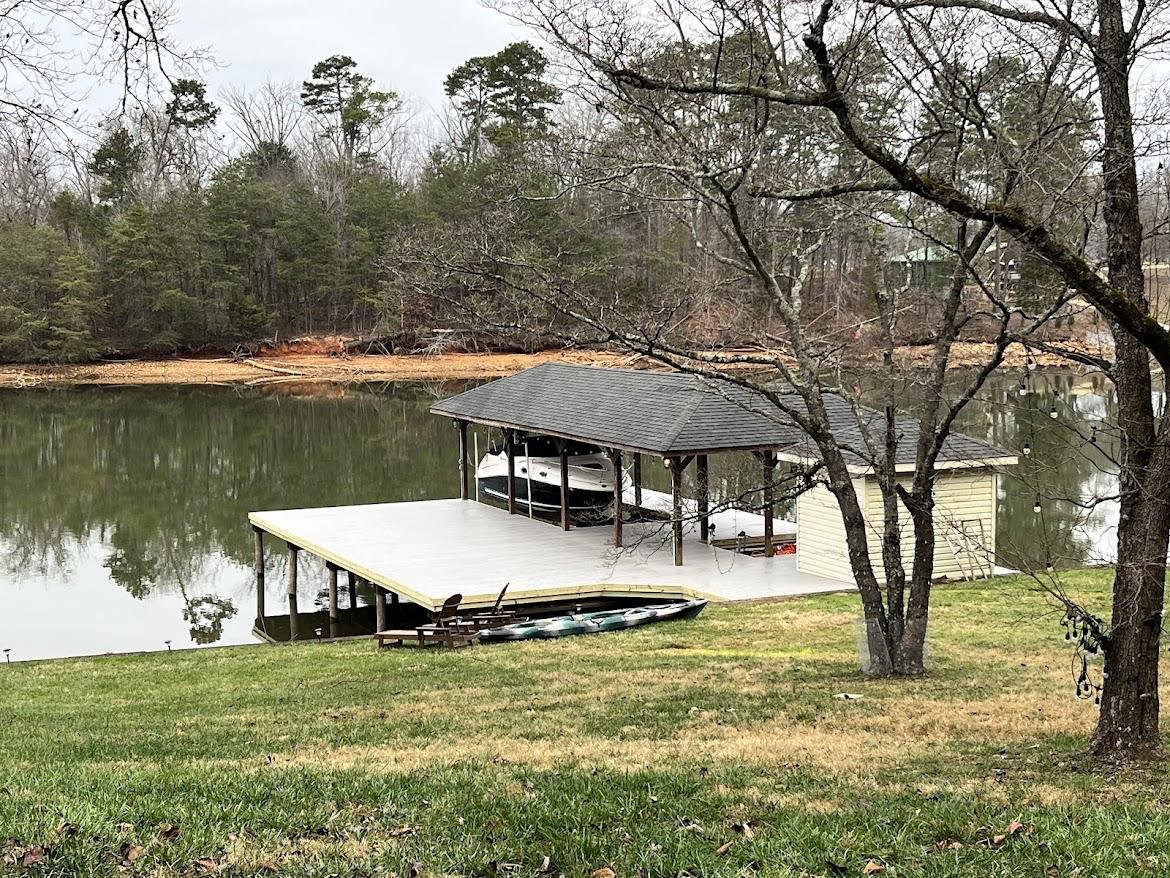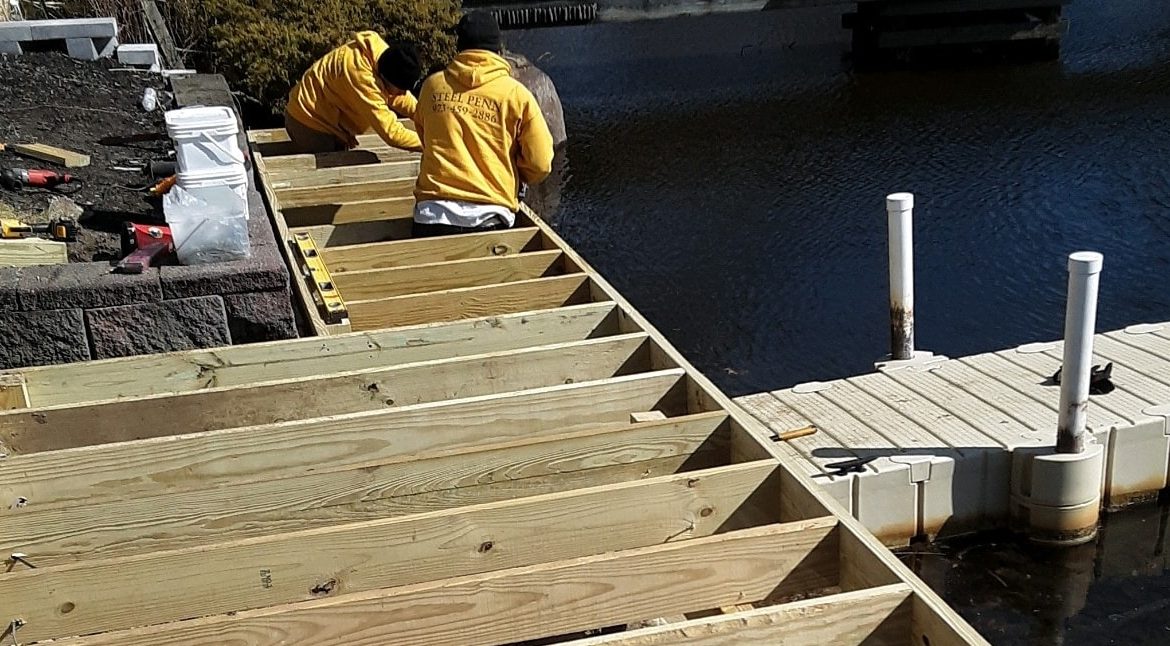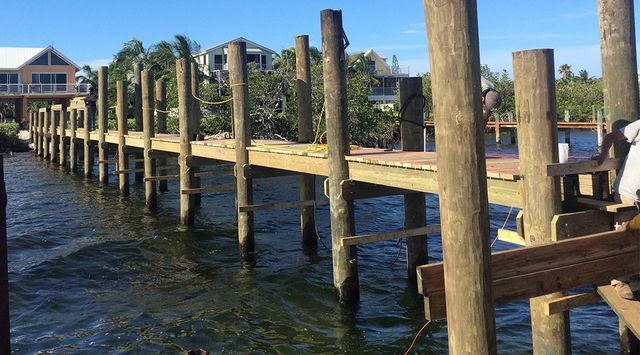DIY Tips for Simple Dock Repairs You Can Handle
DIY Tips for Simple Dock Repairs You Can Handle
Blog Article
Effective Dock Fixing Techniques: Making Sure Architectural Integrity
Making sure the structural stability of docks with reliable fixing strategies is extremely important for the long life and safety of marine facilities. Ultimately, selecting the right repair service products, such as composite products and corrosion-resistant alloys, is crucial for longevity.
Evaluating Dock Damages
Assessing dock damages is a critical first action in guaranteeing the structural stability and security of any type of docking center. This initial examination includes a detailed assessment to determine both concealed and visible problems. Trick aspects to examine include the dock's structure, pilings, outdoor decking, and hardware. Each part must be inspected for indications of wear, rot, corrosion, or other forms of deterioration that could compromise the structural integrity.
Architectural engineers or qualified assessors generally carry out these analyses making use of specialized tools and strategies. Underwater examinations may employ finder devices or from another location ran automobiles (ROVs) to discover immersed damage. Above water, aesthetic evaluations are complemented by utilizing wetness meters and other diagnostic devices to reveal underlying concerns not instantly visible to the nude eye.

Choosing Repair Materials
Selecting the proper fixing materials is a critical action in the dock reconstruction process, one that straight influences the longevity and performance of the repaired framework. Material option need to be driven by elements such as ecological conditions, load-bearing needs, and compatibility with existing dock elements.
In addition to wood, composite products are increasingly prominent as a result of their longevity and low upkeep needs. Composites, normally made from a blend of plastic and timber fibers, provide outstanding resistance to rot, pests, and UV damages. For metal docks, choosing corrosion-resistant alloys such as galvanized steel or marine-grade aluminum is important to protect against rust and ensure architectural stability in saline water problems.
Epoxy resins and marine-grade sealers are vital for fixing splits and securing joints, supplying a water-proof barrier and boosting the dock's total toughness. By diligently selecting high-grade products, dock repair services can achieve durable results, consequently securing against future deterioration and guaranteeing risk-free, reputable usage.
Structural Support Methods
Effective architectural support methods are critical in making certain the stability and longevity of dock fixings. This approach is specifically effective for docks exposed to heavy loads or severe ecological problems.
One more crucial method is the application of fiber-reinforced polymers (FRP) These products supply high strength-to-weight proportions and superb resistance to rust, making them optimal for reinforcing wooden or concrete anchors. FRP can be applied in strips or sheets and bound with epoxy resins to enhance structural stability.
Bracing and securing systems likewise play a crucial duty in architectural reinforcement. Cross-bracing, making use of metal or wooden beams, can neutralize lateral forces, reducing swaying and activity. Anchoring systems, such as helical piers or driven piles, offer a steady structure by transferring tons to much deeper, more secure soil layers.
Lastly, the combination of load-distribution plates can help disperse weight extra evenly throughout the dock's surface, reducing Visit Your URL local stress and anxiety points. These techniques jointly make sure that docks remain durable and safe, efficient in enduring the rigors of their operational setting.
Advanced Fixing Approaches

Another sophisticated technique involves undersea welding, which permits for repair work to be performed without the requirement to dewater the area. This approach is specifically beneficial for attending to structural issues in immersed dock components, making certain marginal interruption to operations. Improved welding techniques, coupled with robot systems, supply accuracy and reliability, thereby expanding the life-span of the dock.
Furthermore, cathodic security systems are executed to avoid corrosion in metal dock frameworks. By utilizing sacrificial anodes or pleased current systems, these techniques effectively mitigate the electrochemical procedures that lead to material damage.
Last but not least, progressed surveillance modern technologies, such as structural health tracking (SHM) systems, supply real-time information on the condition of dock structures. These systems enable proactive maintenance and prompt treatments, eventually guaranteeing the long-lasting structural integrity of the dock.
Upkeep and Avoidance
Maintenance and avoidance are fundamental concepts that underpin the durability and safety of dock structures. Routine examinations are vital, enabling for early discovery of deterioration, possible weaknesses, and ecological impacts. An aggressive technique, including routine look for deterioration, rot, and architectural shifts, mitigates expensive repair services and prolongs the dock's functional life.
Safety nets should include using safety coatings to metal components to defend against corrosion and utilizing cured wood to withstand decay. Furthermore, making certain correct water drainage and ventilation can prevent water build-up, which is an usual root cause of architectural destruction. Integrating quality products and adhering to maker standards during building and fixing phases also play crucial look at this website functions in improving resilience.

Training personnel in dock upkeep best practices makes certain consistent application of preventive measures. Leveraging technological breakthroughs, such as drones for assessments and sensors for real-time surveillance, can better enhance maintenance initiatives. By focusing on maintenance and prevention, dock owners can guarantee architectural integrity, functional safety and security, and cost-effective monitoring over the dock's life expectancy.
Final Thought
To conclude, preserving the structural integrity of aquatic centers demands extensive dock repair service techniques. Comprehensive evaluations utilizing advanced devices discover both visible and concealed damages, while the option of appropriate repair service materials boosts toughness. Carrying out structural reinforcement approaches addresses stress points successfully. Advanced repair service techniques, paired with routine upkeep techniques, guarantee the dock remains operational and secure under diverse ecological problems. Embracing these techniques considerably extends the life expectancy and performance of aquatic framework.
Making sure the architectural integrity of docks with efficient fixing methods is critical for the long life and safety of aquatic centers.Choosing the suitable fixing materials is a pivotal step in the dock remediation process, one that directly affects the longevity and efficiency of the repaired structure.Reliable structural support techniques are vital in ensuring the security and long life of dock fixings. By focusing on maintenance and prevention, dock proprietors can make certain architectural integrity, functional safety and security, and economical administration over the dock's lifespan.
In final thought, maintaining the structural stability of marine facilities necessitates detailed dock fixing methods.
Report this page